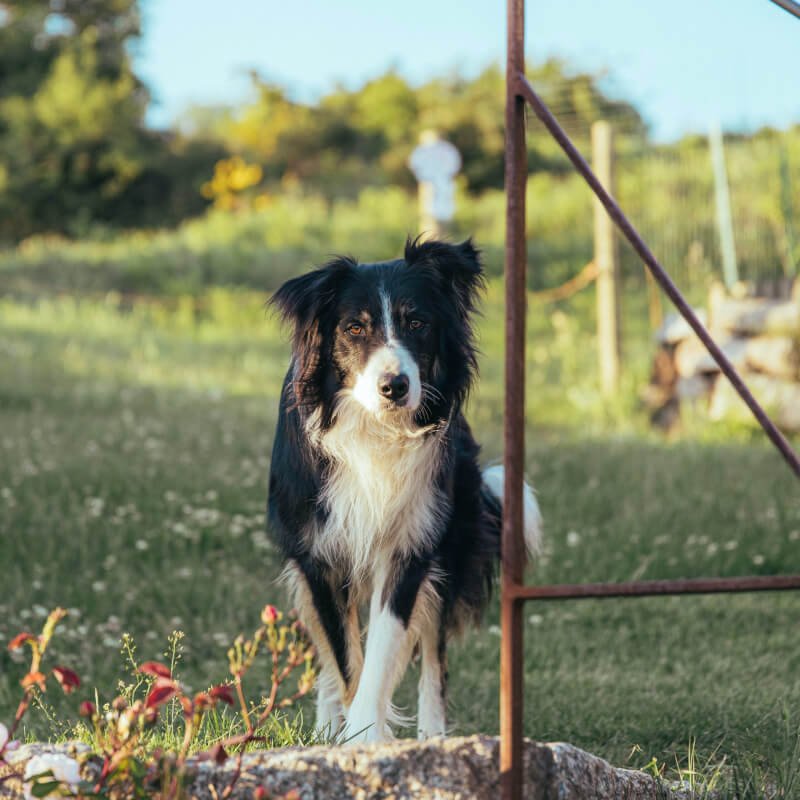If you’ve ever wondered whether cats and dogs can truly coexist in harmony, you’re not alone. The age-old question of whether these two beloved pets can get along has intrigued pet owners for centuries. While some may be skeptical due to the perceived differences in their nature, it is fascinating to explore the possibilities of a peaceful cohabitation between these furry friends. Let’s take a closer look at whether cats can indeed get along with dogs and shed some light on this long-debated topic.
Understanding the Nature of Cats and Dogs
Cats and dogs have unique and distinct behaviors that can influence how well they get along with each other. Understanding these behaviors is crucial in creating a harmonious environment for your pets. Cats are more independent and territorial creatures who prefer their own space and solitude. On the other hand, dogs are more social animals who thrive in the company of others, including other dogs and humans. These inherent differences in behavior can sometimes pose challenges when trying to introduce both species into a shared living space.
Ready for Cat Trivia?
Test your knowledge about cats!

Different Behaviors
Cats are natural hunters and are known to be more aloof compared to dogs. They tend to be more cautious and reserved, often requiring time to warm up to new surroundings and individuals. Dogs, on the other hand, are known for their loyalty and eagerness to please. They enjoy being part of a pack and thrive in social interactions. Understanding the specific behaviors and needs of each pet will help you manage any potential conflicts and create an environment where both cats and dogs can coexist peacefully.

Different Social Structures
Cats are solitary predators in nature, whereas dogs are pack animals. This fundamental difference in their social structures also affects how they interact with each other. When introducing cats and dogs, it’s important to keep in mind that cats may view the dog as a potential threat to their territory, while dogs may see the cat as a member of their pack. These dynamics can sometimes lead to conflicts or misunderstandings if not properly managed. By understanding and respecting the social structures of both cats and dogs, you can ensure a smoother integration and foster positive relationships between them.
Factors Influencing Cats and Dogs Getting Along
Several factors can influence how well cats and dogs get along with each other. These factors can include breed and individual personalities, early socialization, size and age differences, gender, and health and neutering.
Breed and Individual Personalities
Different dog breeds have varying temperaments and energy levels, which can affect how they interact with cats. Some breeds, such as retrievers or spaniels, are generally more friendly and adaptable, while others, like terriers, may have a higher prey drive that can pose challenges when coexisting with cats. Additionally, individual personalities play a significant role in how well cats and dogs get along. Some cats may be more social and accepting of dogs, while others may be more territorial and less tolerant of their presence.
Early Socialization
Proper socialization from an early age is crucial for both cats and dogs. Exposing them to various environments, people, and animals can help them develop positive associations and reduce the likelihood of fear or aggression later in life. Introducing cats and dogs to each other during the critical socialization period can significantly increase the chances of them getting along well as they grow older.
Size and Age Differences
Size and age differences between cats and dogs can influence how well they get along. A large dog may unintentionally scare or harm a small cat, especially if they are not familiar with each other. Similarly, an older, more laid-back dog may be less tolerant of a hyperactive kitten. Gradually introducing them in a supervised and controlled environment allows them to acclimate to each other’s sizes and adjust their interactions accordingly.
Gender
Gender can also play a role in how cats and dogs interact. In some cases, male cats may be more accepting of dogs or other animals, while female cats may be more territorial and less inclined to tolerate their presence. Similarly, male dogs may exhibit more dominant behaviors, while female dogs may be more nurturing and accepting. Considering the dynamics between genders can help predict and manage potential conflicts.
Health and Neutering
The health and hormonal status of both cats and dogs can affect their behavior towards each other. Unneutered animals may display heightened territorial or aggressive behaviors, making integration more challenging. Spaying or neutering your pets can help reduce these behaviors and promote calmer interactions. Additionally, ensuring that both pets are healthy and free from any underlying medical conditions will contribute to their overall well-being and improve their chances of getting along.

Introducing Cats and Dogs
Introducing cats and dogs properly is crucial to ensure a smooth transition and minimize any potential conflicts. Taking the time to introduce them gradually and using specific techniques like separate introductions, scent exchange, and supervised face-to-face meetings can greatly increase the chances of success.
Separate Introductions
Initially, it’s important to keep cats and dogs in separate areas of the house to give them time to adjust to each other’s presence. This allows them to become familiar with each other’s scents without feeling threatened. Gradually swapping their living spaces can help them acclimate to each other’s smells and prevent any sudden or negative reactions.
Scent Exchange
Introducing the scent of one pet to the other before allowing direct physical contact can help create familiarity and acceptance. This can be done by gently rubbing a cloth or towel on one pet and placing it near the other pet’s environment. This scent exchange allows them to establish a positive association before moving on to face-to-face interactions.
Supervised Face-to-Face Meetings
Once both pets have become accustomed to each other’s scents, supervised face-to-face meetings can begin. This should be done in a neutral and controlled environment to prevent any territorial behavior. Keeping both pets on a leash and rewarding them for calm and positive interactions can help establish a foundation of trust and comfort.
Signs of Positive Interaction
Monitoring the body language, play behavior, and sharing of space between cats and dogs can give you insights into their level of comfort and acceptance towards each other.
Body Language
Observing the body language of both pets during their interactions can provide valuable information about how they feel. Look for relaxed postures, gentle tail wagging or swishing, raised but not stiff hair, and soft body movements. These signs indicate a positive and comfortable interaction.
Play Behavior
Engaging in play behavior together is a positive sign that cats and dogs are getting along well. This can include chasing, pawing, play-biting without aggression, and taking turns being the chaser or the one being chased. Play behavior helps foster bonding and establishes a positive dynamic between the two pets.
Sharing Space
Cats and dogs that willingly share physical spaces, such as sleeping areas or resting spots, are exhibiting signs of mutual acceptance and comfort. If they can peacefully coexist in close proximity without signs of tension or aggression, it indicates a successful integration.

Signs of Conflict or Aggression
While it is normal for cats and dogs to have some disagreements as they adjust to each other’s presence, it’s important to be aware of signs of aggression or conflict that may require intervention.
Aggressive Body Language
Flattened ears, raised hackles, intense staring, growling, or showing teeth are all signs of aggressive body language. If either pet displays these behaviors, it is crucial to separate them immediately and seek professional advice to avoid potential harm.
Growling, Hissing, or Barking
Verbal communication in the form of growling, hissing, or barking can indicate that one or both pets are feeling threatened or uncomfortable. Pay attention to the intensity and frequency of these vocalizations, as it can signal a need for intervention or further training.
Fights and Injuries
Physical confrontations and injuries between cats and dogs can occur, especially if their interactions escalate beyond mere disagreements. Persistent aggression, biting, or scratching should never be tolerated and require immediate intervention and professional assistance.
Building Positive Relationships
Building positive relationships between cats and dogs takes time, patience, and a proactive approach. Utilizing strategies such as patience and time, positive reinforcement, safe spaces, and promoting bonding activities can strengthen the bond between cats and dogs.
Patience and Time
Rome wasn’t built in a day, and neither are strong bonds between pets. It’s important to give both cats and dogs time to adjust to each other’s presence and establish their own routines and boundaries. Pushing them to interact before they are ready can result in stress and potential conflicts. Allow them to dictate the pace, and with time, they may develop a mutual understanding and companionship.
Positive Reinforcement
Rewarding desirable behaviors with praise, treats, or petting can reinforce positive interactions between cats and dogs. By associating good behavior with positive outcomes, both pets will be encouraged to repeat those behaviors, helping to create a harmonious environment.
Safe Spaces
Providing separate, safe spaces for both cats and dogs is crucial in helping them feel secure and reducing potential conflicts. Cats should have access to elevated perches or hiding spots where they can observe and retreat to if they feel overwhelmed. Dogs should have their own comfortable area with toys, bedding, and access to fresh water.
Promoting Bonding Activities
Engaging both pets in activities that promote bonding can help strengthen their relationship. This can include gentle play sessions, short walks together, or supervised training sessions where both pets can participate. These shared experiences can create positive associations and build trust.

Additional Tips for Successful Coexistence
In addition to the strategies mentioned above, there are a few more tips that can contribute to a successful coexistence between cats and dogs.
Train and Socialize Both Pets
Proper training and socialization are essential for both cats and dogs. This includes teaching basic obedience commands and exposing them to various environments, people, and animals. By investing time in training both pets, you can set them up for success and reduce the likelihood of conflicts.
Provide Individual Attention
Ensuring that both pets receive individual attention is important to prevent any potential jealousy or feelings of neglect. Dedicate quality time to each pet through play sessions, grooming, or one-on-one interactions to strengthen the bond you have with them individually.
Respecting Boundaries
Each pet has their own comfort level and boundaries. It’s important to respect these boundaries and not force interactions or situations that make either pet uncomfortable. Gradually introducing them to new experiences and environments while respecting their individual needs will contribute to a more peaceful coexistence.
Managing Separation and Alone Time
Both cats and dogs also require alone time and separation from each other. Providing separate areas where each pet can retreat to will help them feel secure and reduce potential stress. Ensuring they have access to their own private spaces will help prevent conflicts and promote overall well-being.
Common Issues and Solutions
Even with the best preparation and intentions, certain common issues may arise when integrating cats and dogs into a shared living space. Here are some common issues and potential solutions to consider:
Cat Chasing Dog
If a cat is chasing a dog, it could be due to fear or territorial behavior. Ensuring the cat has ample escape routes, providing vertical space, and engaging in positive reinforcement training can help mitigate this behavior.
Resource Guarding
Resource guarding occurs when either pet becomes protective or possessive of their food, toys, or other valuable items. Feeding both pets separately, using positive reinforcement to reward sharing behaviors, and gradually desensitizing them to each other’s presence can help alleviate this issue.
Predatory Behavior
Cats have a natural instinct to chase and pounce on smaller animals, which can be problematic when living with a dog. Managing their interactions through controlled, supervised meetings and training the dog to have a strong “leave it” command can help minimize predatory behavior.
Litter Box Challenges
If a dog shows an interest in the cat’s litter box, it’s important to provide a safe, elevated space for the litter box where the cat can access it while preventing the dog from reaching it. Additionally, training the dog to leave the litter box alone can help alleviate this issue.

Seeking Professional Help
Sometimes, despite our best efforts, cats and dogs may still struggle to get along. In such cases, it may be necessary to seek professional help from a veterinarian or an animal behaviorist.
When to Consult a Veterinarian or Animal Behaviorist
If conflicts between cats and dogs persist, escalate into aggression, or pose a risk to the safety of both pets, it is essential to consult a veterinarian or an animal behaviorist. These professionals can provide guidance, assess the underlying causes of the issues, and develop a customized plan to address the specific challenges you are facing.
Professional Training and Therapy Options
There are various training and therapy options available to improve the relationship between cats and dogs. Techniques such as positive reinforcement training, behavior modification, or even medication in certain cases can be recommended by professionals to help resolve conflicts and promote harmony.
Conclusion
Integrating cats and dogs into a shared living space requires understanding their individual behaviors, proper introductions, and proactive management of their interactions. By considering the factors that influence their compatibility, establishing positive relationships, and addressing common issues with patience and professional assistance when needed, you can create a peaceful and harmonious environment for both cats and dogs to thrive together. With time, effort, and a friendly approach, you can strengthen the bond between your furry friends and foster a loving and cooperative household.


